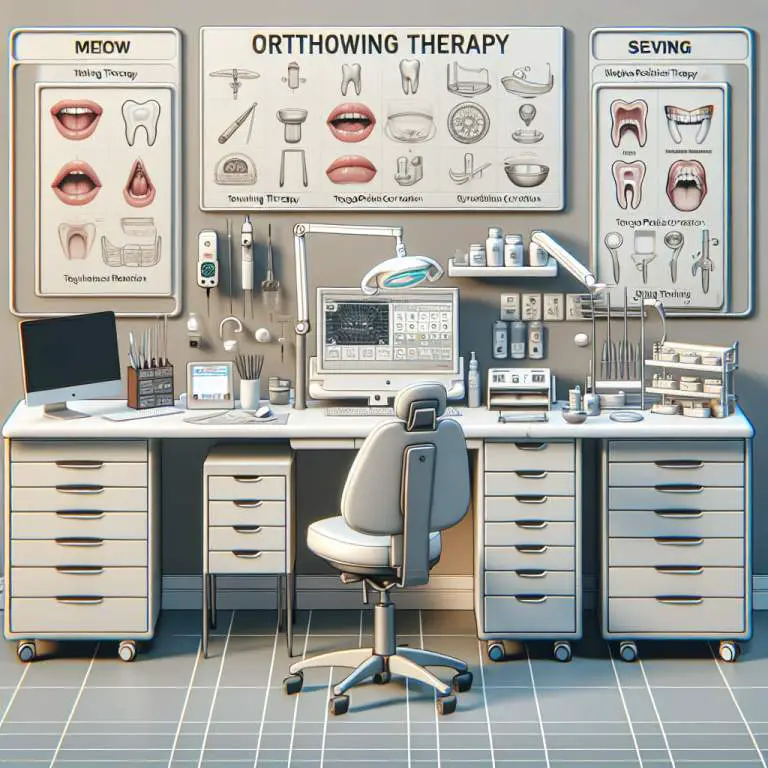What are the signs I’m mewing incorrectly?
If you’re mewing incorrectly, you might notice signs like discomfort or pain in your jaw and teeth, difficulty breathing, or a feeling that your tongue is constantly fighting for space in your mouth. These symptoms suggest that your technique needs adjustment to ensure proper alignment and benefit from mewing.

How Can I Tell If I’m Mewing Correctly?
Mewing is a technique that involves placing your tongue against the roof of your mouth. It’s supposed to help with things like breathing better and making your jawline look sharper. But how do you know if you’re doing it right? First off, your entire tongue should be touching the roof of your mouth, not just the tip.
Another sign you’re mewing correctly is if you can breathe comfortably while doing it. If you find it hard to breathe, that might mean your tongue isn’t in the right spot. Remember, mewing should feel natural and not forced. If it feels weird, you might need to adjust how you’re doing it.
What Are Common Mistakes People Make While Mewing?
A lot of people think they’re mewing when they’re actually not. One big mistake is only pressing the tip of their tongue against the roof of their mouth. The whole tongue needs to be up there for it to work. Another mistake is pushing too hard. Mewing isn’t about force; it’s more about where your tongue rests naturally.
Some folks also forget to keep their mouth closed and breathe through their nose while mewing. Breathing through your mouth can mess up all the good work your tongue is trying to do up there. So remember, keep those lips together and breathe through your nose.
Why Is Proper Tongue Posture Important for Mewing?
Having the right tongue posture is super important when you’re mewing because it helps with a bunch of stuff like making sure you breathe properly through your nose. When your tongue is in the right place, it opens up your airways more which makes breathing easier and healthier for you.
Proper tongue posture also helps shape your face over time. It can make your jawline look sharper and give your face a more balanced look. That’s why getting the posture right is key – it’s not just about sticking your tongue on the roof of your mouth; it’s about making sure it helps improve other parts of your health too.
How Does Incorrect Mewing Affect Facial Structure?
If you don’t mew correctly, instead of helping shape your face nicely, you might end up not seeing any changes at all or even messing with how things are supposed to align in there. For example, if only part of your tongue is pressing up or if you’re pushing too hard, this could lead to uneven pressure on different parts of the jaw and face.
This uneven pressure can mess with how symmetrical our faces look over time because some areas might get more ‘workout’ than others due to incorrect mewing techniques. So, doing mewing wrong can actually have opposite effects from what we want – instead of improving our facial structure, we could be throwing things off balance!
<
| Indicator/Symptom | Possible Reason | Suggested Adjustment |
|---|---|---|
| Jaw pain or discomfort | Excessive force or incorrect tongue posture | Relax the jaw and ensure the entire tongue is evenly placed against the roof of the mouth. |
| Headaches or neck pain | Straining muscles due to improper posture | Focus on maintaining a natural head position and relax your neck muscles. |
| Difficulty breathing or swallowing | Tongue blocking the airway partially | Adjust the tongue so it’s not too far back. The tip should be just behind the upper front teeth. |
| Tooth pain or movement | Applying pressure unevenly or on teeth instead of palate | Distribute pressure across the entire palate, not just on the teeth. |
| Fatigue in tongue or jaw muscles early in practice | Lack of muscular endurance from new exercise routine | Continue practicing consistently; endurance will build over time. Start with shorter sessions if necessary. |
Can Improper Mewing Cause Jaw Pain or TMJ Issues?
Yes, mewing the wrong way can lead to jaw pain or even TMJ (temporomandibular joint) issues. When you don’t position your tongue correctly on the roof of your mouth, it can put extra stress on your jaw. This might make your jaw feel sore or cause clicking sounds when you move it.
TMJ disorders are serious and can affect how you talk, eat, and even sleep. If you’re experiencing any discomfort while mewing, it’s a sign that something isn’t right. It’s important to adjust how you’re doing it to avoid long-term damage to your jaw.
What Adjustments Should Be Made If You’re Mewing Incorrectly?
If you find out that you’re not mewing correctly, don’t worry. The first step is to relax your face and jaw muscles. Make sure your tongue is touching the roof of your mouth but without forcing it too hard. Your mouth should be closed gently, with teeth slightly touching or with a small space between them.
Another adjustment is to check your posture. A straight back and a lifted head help in positioning the tongue properly inside the mouth. Remember, mewing should feel natural and not forced. If you’re feeling any strain, take a break and try again later.
How Long Does It Take to See Results from Correct Mewing?
The time it takes to see results from correct mewing varies for each person. For some, changes may start showing within a few months, while for others, it might take longer than a year. It depends on factors like age, genetics, and how consistently you practice mewing.
Persistence is key when it comes to mewing. Even if results take time to appear visibly, improvements in breathing patterns and posture can be noticed earlier on. Keeping track of these small wins can motivate you to continue with the practice.
Final Thoughts
Mewing is more than just a trend; it’s about improving facial structure and health through proper tongue posture. However, doing it incorrectly can lead to problems rather than benefits. Paying attention to technique and making necessary adjustments are crucial steps towards successful mewing.
In conclusion, remember that patience plays a big role in seeing results from mewing. Stay consistent with the practice and listen to your body’s signals along the way. With time and dedication, positive changes are possible.







